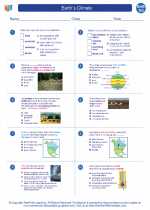Coulomb's Law
Coulomb's Law describes the electrostatic force between two charged particles. It states that the force F between two point charges q1 and q2, separated by a distance r, is directly proportional to the product of the charges and inversely proportional to the square of the distance between them.
The mathematical expression for Coulomb's Law is:
F = k * |q1 * q2| / r^2
Where F is the magnitude of the force between the charges, k is Coulomb's constant (8.9875 x 10^9 N m^2/C^2), q1 and q2 are the magnitudes of the charges, and r is the distance between the charges.
Key Concepts
- Force and Distance: The force between two charges is directly proportional to the product of the charges and inversely proportional to the square of the distance between them.
- Coulomb's Constant: Coulomb's constant, k, is a fundamental constant of nature that determines the strength of the electrostatic force.
- Vector Nature of the Force: The force between charges is a vector quantity, meaning it has both magnitude and direction. Like charges repel each other, while opposite charges attract.
Application
Coulomb's Law is used to calculate the force between static charges in a wide range of situations, from understanding the behavior of charged particles in atoms to the interaction between charged objects in everyday life. It also forms the basis for understanding the behavior of electric fields and the principles of electrostatics.
Study Guide
When studying Coulomb's Law, make sure to focus on the following key points:
- Understanding the mathematical expression of Coulomb's Law and how to use it to calculate the electrostatic force between charges.
- Recognizing the relationship between force, charge, and distance, and how changes in these quantities affect the strength of the electrostatic force.
- Practicing solving problems involving the application of Coulomb's Law to different scenarios, such as point charges, charged spheres, and charged objects.
- Exploring real-world examples of Coulomb's Law in action, such as the behavior of static electricity and the interaction between charged particles in atoms and molecules.
By mastering these concepts and practicing problem-solving, you can develop a strong understanding of Coulomb's Law and its applications in the study of electrostatics.
.◂Earth Science Worksheets and Study Guides High School. Earth`s Climate

 Worksheet/Answer key
Worksheet/Answer key
 Worksheet/Answer key
Worksheet/Answer key
 Vocabulary/Answer key
Vocabulary/Answer key
 Vocabulary/Answer key
Vocabulary/Answer key
 Vocabulary/Answer key
Vocabulary/Answer key
